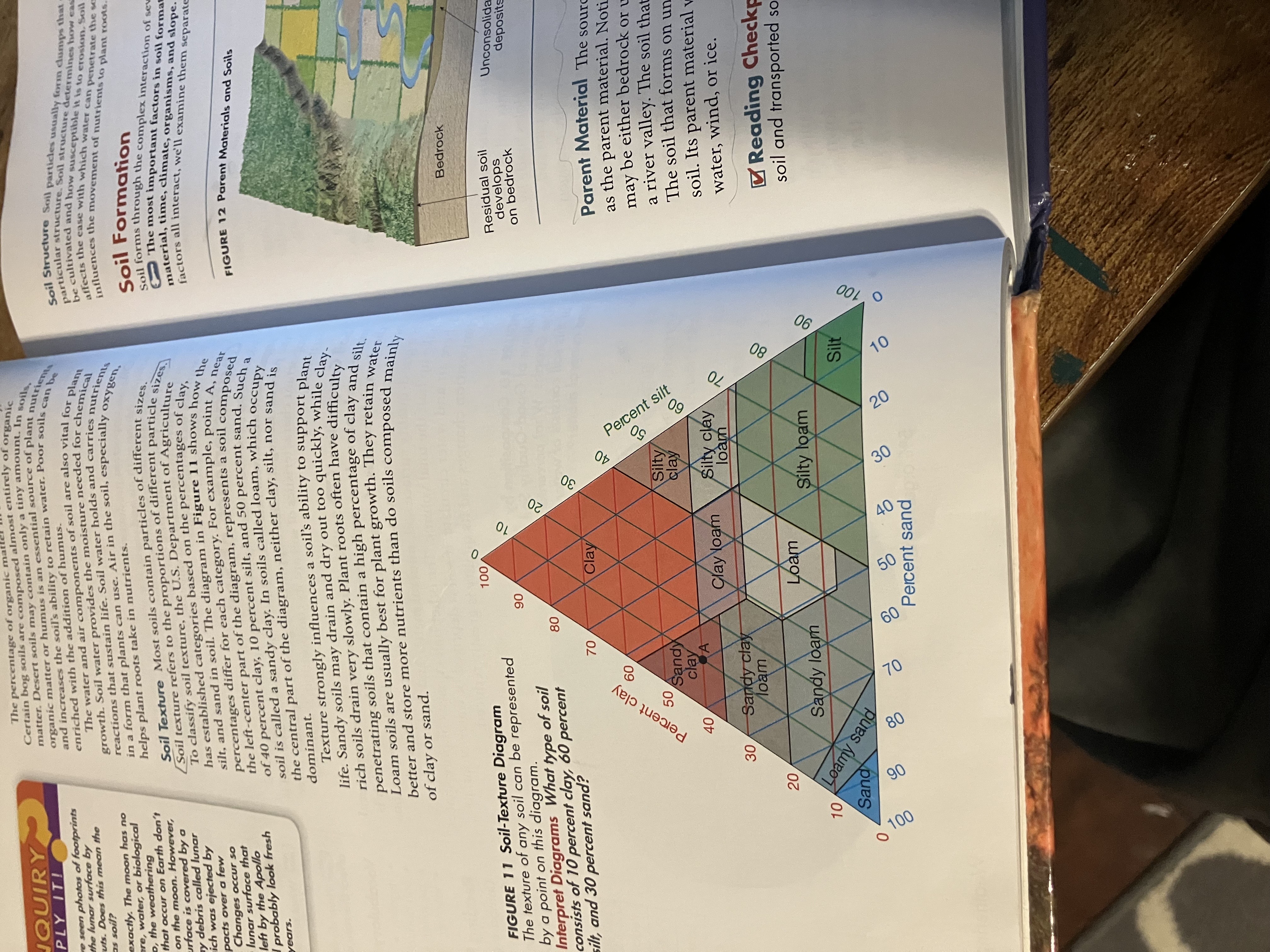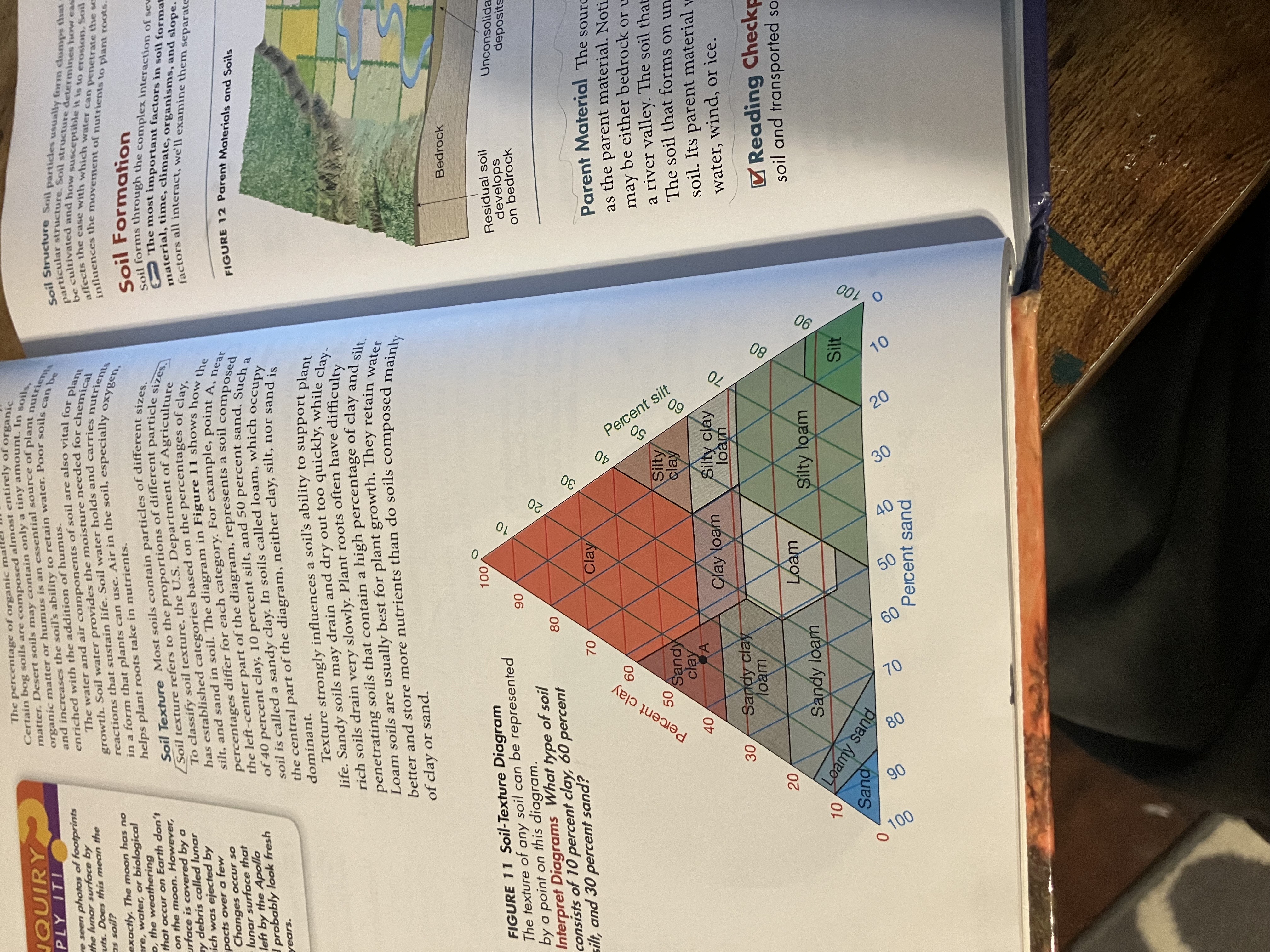Chapter 5: Weathering, Soil, and Mass Movements
1/25
Earn XP
Description and Tags
Academic Earth/Space Science
Name | Mastery | Learn | Test | Matching | Spaced |
|---|
No study sessions yet.
26 Terms
Mechanical weathering defined.
Mechanical weathering occurs when physical forces break rock into smaller pieces without changing the rock’s mineral composition.
Know examples of mechanical weathering.
Various events and forces can cause mechanical weathering. In nature, three physical processes are especially important causes of mechanical weathering: frost wedging, unloading, and biological activity.
Know what happens to water volume when water freezes.
When liquid water freezes, it expands by about 9 percent, exerting a tremendous outward force.
Chemical weathering defined.
Chemical weathering is the transformation of rock into one or more new compounds. Then new compounds remain mostly unchanged as long as the environment in which they formed does not change.
Know which gases commonly mix with water vapor to form acid rain.
Water absorbs carbon dioxide when rain falls through the atmosphere. Water that seeps through the ground also picks up carbon dioxide from decaying organic matter. The carbon dioxide dissolved in water forms carbonic acid. This is the weak acid in carbonated soft drinks. Carbonic acid reacts with many common minerals.
Water in the atmosphere also absorbs sulfur oxides and nitrogen oxides. These oxides are produced by the burning of coal and petroleum. Through a series of chemical reactions, these
Know common examples of chemical weathering from text.
Gravestones made of granite are relatively resistant to chemical weathering. You can easily read the inscriptions on a granite gravestone that is over 100 years old. In contrast, marble gravestones undergo much more rapid chemical weathering. Marble is composed of calcite, which easily dissolves even in weak acids.
Know the most common factors that affect the rate of weathering.
Two other factors that affect the rate of weathering are rock characteristics and climate.
Be able to contrast between residual and transported soil.
The source of the mineral matter in soil is known as the parent material. That parent material may be either bedrock or unconsolidated deposits, such as those in a river valley. The soil that forms on bedrock is called residual soil. The soil that forms on unconsolidated deposits is called transported soil. It’s parent material was moved from another location by gravity, water, wind, and ice.
Know real life examples of chemical weathering.
You can contrast chemical weathering and mechanical weathering with a sheet of paper. Tearing the paper into small pieces is like the mechanical weathering of rock. Burning the paper, which changes it into carbon dioxide and water, is like chemical weathering.
Know in which climates weathering is most effective.
For example, a hot, wet climate may produce a thick layer of chemically weathered soil. In the same amount of time, a cold, dry climate might produce only a thin layer of mechanically weathered debris.
Know which rock types are most easily broken down by weathering (example: metamorphic and igneous rocks are more resistant to weathering)
Sedimentary rocks, particularly those containing weaker minerals or with high porosity, are generally more susceptible to weathering than igneous and metamorphic rocks, which are often more resistant due to their mineral composition and structure. Examples are limestone, sandstone, shale, mudstone, and siltstone.
Know the climate type has the greatest impact on soil formation.
For example, a hot, wet climate may produce a thick layer of chemically weathered soil. In the same amount of time, a cold, dry climate might produce only a thin layer of mechanically weathered debris.
Know in which climates soils tend to form most quickly.
For example, a hot, wet climate may produce a thick layer of chemically weathered soil. In the same amount of time, a cold, dry climate might produce only a thin layer of mechanically weathered debris.
Know what is meant by a soil’s texture.
Soil texture refers to the proportions of different particle sizes.

Know the most common sources of “organics” in soil.
Soil has four major components: mineral matter, or broken-down rock; organic matter, or humus, which is the decayed remains of organisms; water; and air.
Be able to read and interpret the soils texture diagram from page 134.


Know the various horizons (A,B,C) associated with soils from page 138.
A Horizon: The A horizon is commonly known as topsoil. Its upper part consists mostly of organic matter, including loose leaves and partly decomposed plant structures. It is teeming with insects, fungi, and microorganisms. The lower part of the A horizon is a mixture of mineral matter and organic matter.
B Horizon: The B horizon, or subsoil, contains fine clay particles washed out of the A horizon by water that filters through pore spaces. In some soils, the clay that accumulates in the B horizon forms a compact, impenetrable layer called hardpan. The B horizon is the lower limit of most plant roots and burrowing animals.
C Horizon: Located between the B horizon and the unweathered parent material is the C horizon, which contains partially weathered parent material. While the A and B horizons barely resemble the parent material, the C horizon does.
Be able to compare and contrast a laterite, pedocal, and pedalfer.
Three common types of soil are pedalfer, pedocal, and laterite.
Pedalfers usually form in temperate areas that receive more than 63 cm of precipitation each year. This soil type is present in much of the forested area of the eastern half of the United States. The B horizon in pedalfers contains large amounts of iron oxide and aluminum-rich clays, giving these soils a brown to red-brown color.
Pedocals are found in the drier western United States in areas that have grasses and brush vegetation. Because chemical weathering is slower in dry climates, pedocals generally contain less clay than pedalfers. Pedocals contain abundant calcite, or calcium carbonate, and are typically a light gray-brown.
Laterites form in hot, wet tropical areas. Chemical weathering is intense under such conditions. So laterites are usually deeper than soils that develop over a similar period in temperate areas. The large quantity of water that filters through these soils removes most of the calcite and silica. Iron oxide and aluminum oxide are left behind. The iron oxide gives laterite a distinctive orange or red color.
Be able to compare soil erosion rates of today v.s. those of the past.
Human activities that remove natural vegetation, such as farming, logging, and construction, have greatly accelerated erosion.
Know common examples of how humans contribute to soil erosion.
Human activities that remove natural vegetation, such as farming, logging, and construction, have greatly accelerated erosion.
Be able to differentiate between gullies, rills, streams, and sheet erosion.
After flowing as a thin sheet for a short distance, the water forms tiny streams called rills. As more water enter the rills, they erode the soil further, creating trenches known as gullies. Although most dislodged soil particles do not move far during each rainfall, large quantities eventually make their way down slope to a stream. The stream transports these sediments and eventually deposits them.
Know the force responsible for mass movements.
Gravity causes material to move down slope.
Mass movements defined.
The transfer of rock and soil down slope due to gravity is called mass movement.
Know which seasons of the year pose the greatest threat of mass movements.
Spring when the snow is melting.
Know the various triggers/causes of mass movements.
Among the factors that commonly trigger mass movements are saturation of surface materials with water, oversteepening of slopes, removal of vegetation, and earthquakes.
Be able to compare and contrast the various types of mass movements.
Geologists classify mass movements based on the kind of material that moves, how it moves, and the speed of movement. We’ll consider five basic types of mass movement: rockfalls, slides, slumps, flows, and creep.
A rockfall occurs when rocks or rock fragments fall freely through the air. This type of mass movement is common on slopes that are too steep for loose material to remain on the surface.
In a slide, a block of material moves suddenly along a flat, inclined surface. Slides that include segments of bedrock are called rock slides.
A slump is the downward movement of a block of material along a curved surface. The material in a slump usually does not travel very fast or very far.
Flows are mass movements of material containing a large amount of water, which move down slope as a thick fluid. Flows that move quickly, called mudflows, are common in semiarid mountainous regions, such as parts of southern California. Earth flows are flows that move relatively slowly — from about a millimeter per day to several meters per day. Their movement may continue for years. Earth flows occur most often on hillsides in wet regions.
The slowest type of mass movement is creep, which usually travels only a few millimeters or centimeters per year. One factor that contributes to creep is alternating between freezing and thawing.